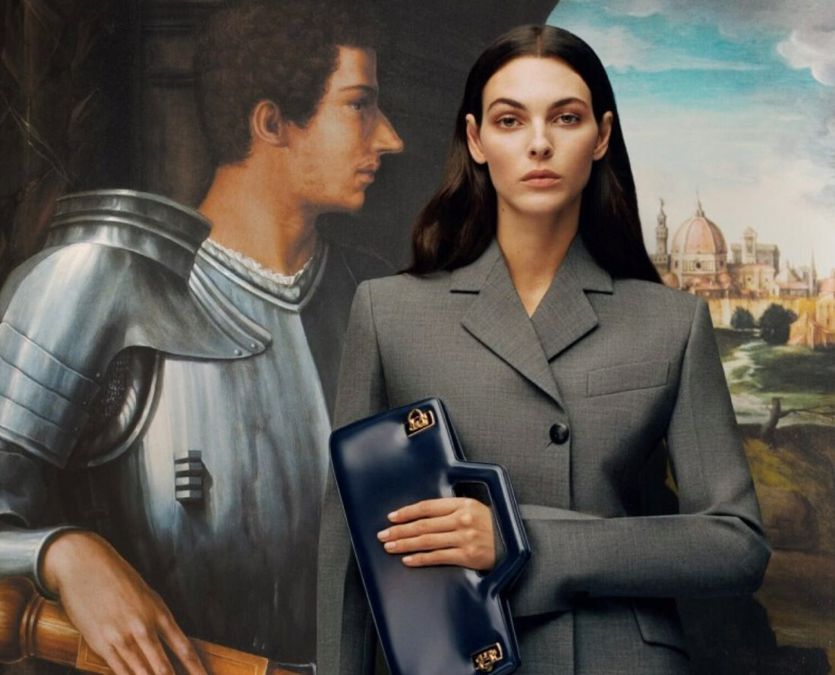Listen to the audio version of the article
It will be a challenging autumn for Botticelli’s Venus, after two seasons spent inside and outside the frames, on and off the real box (an adjective with a double meaning, in this case) of the Uffizi and the virtual one of the internet. Protagonist of the “Open to wonder” campaign, presented in the spring by the Ministry of Tourism to promote the excellence of our country, the most famous Venus of the Renaissance was at the center – in spite of herself, we could say – of controversy or at least perplexity (see also comment by Pierluigi Sacco in Sole 24 Ore of 26 April). A few days ago the accusation of fugitives had been added, in her role as an influencer on tourism, but now – she explained herself (!) on the ministry’s social accounts – she is ready for new adventures with those who want to follow her to discover the wonders of the our country. The declared aim of the campaign was not to remember “only” Botticelli’s masterpiece or “only” his house, the Uffizi in Florence, or “only” the immense Italian artistic heritage and our most famous museums. The goal was to make Venus a sort of fascinating and chameleon-like guide to tourist destinations, from north to south. Perhaps Venus will amaze us, there is no reason to hope that Open to wonder will not be reborn as a phoenix.
The Uffizi and Swatch: the new watches with Botticelli in Florence
In the meantime, Ferragamo has decided to join other famous Uffizi “tenants” with the “New Renaissance” campaign, where the autumn-winter 2023-24 collection is photographed surrounded, immersed, “contaminated” by very famous works, such as L’ Annunciation (1570-75) by Paolo Veronese, the Portrait of Alessandro de Medici (1534) by Giorgio Vasari and two works by Sandro Botticelli (Will Venus be jealous?), the Annunciation of San Martino alla Scala (1481) and the Portrait of man with medal of Cosimo the Elder. «The Renaissance is rooted in Florence and Florence is rooted in Ferragamo – explained Maximilian Davis, creative director of the maison -. In this new era, it was natural to recognize the symbolic city of the Renaissance as our spiritual home, drawing on his genius and artistic talent to tell the aesthetics of the new collection». It is not a promotional operation of the Uffizi or of Italy, therefore (even if the company let it be known that the collaboration with the museum will take other forms), but of the Ferragamo Renaissance.
The new era Davis talks about is having a hard time getting started: in the first half, revenues fell by 4.8% to 600 million and net profit fell by 65.4% to 21.4 million, against a sector – the high range – which will grow by double digits from 2022. It is to be hoped that the Renaissance setting will bring good luck (in fashion it takes a lot) to Ferragamo, but perhaps it is worth asking whether the links between fashion and art should be sought or developed in other directions. Stylists and entrepreneurs in the sector love and collect works of all kinds and in recent decades house museums and above all foundations have sprung up, with particular attention to contemporary art.
Just think of the projects by François Pinault and Bernard Arnault, founders of the two largest luxury groups in the world, Kering and Lvmh, who have “given”, respectively, exceptional museums to Venice and Paris. In Italy the best-known initiative is the Prada Foundation – in Milan and Venice – but there are also those of the Maramotti family in Reggio Emilia, Furla in Bologna and recent yet solid collaborations such as Herno with Miart and countless others. Then there is the more classic patronage (the restoration of the Colosseum by Tod’s, that of the Rialto Bridge commissioned by Renzo Rosso, just to give two examples).
Operations to which emphasis is rightly given, no understatement, because many customers of fashion and luxury brands are impressed and even motivated to purchase knowing that they contribute – indirectly – to the support of art. Not to mention how much art has been an inspiration for stylists (one example above all: Yves Saint Laurent, who in 1965 managed to “transform” some of Piet Mondrian’s works into cocktail dresses) and how, even recently, they are collaborations were born between well-known brands, from Uniqlo to Swatch, and large museums, to use (faithfully) the images of famous paintings on t-shirts and watches. Between the two extremes, mutual aid or subjection, commercial or cultural, the best solution would be mutual enrichment, the most authentic of osmosis and almost certainly everyone would benefit: artists, stylists, the public of museums, exhibitions and fairs and , why not, company accounts.
